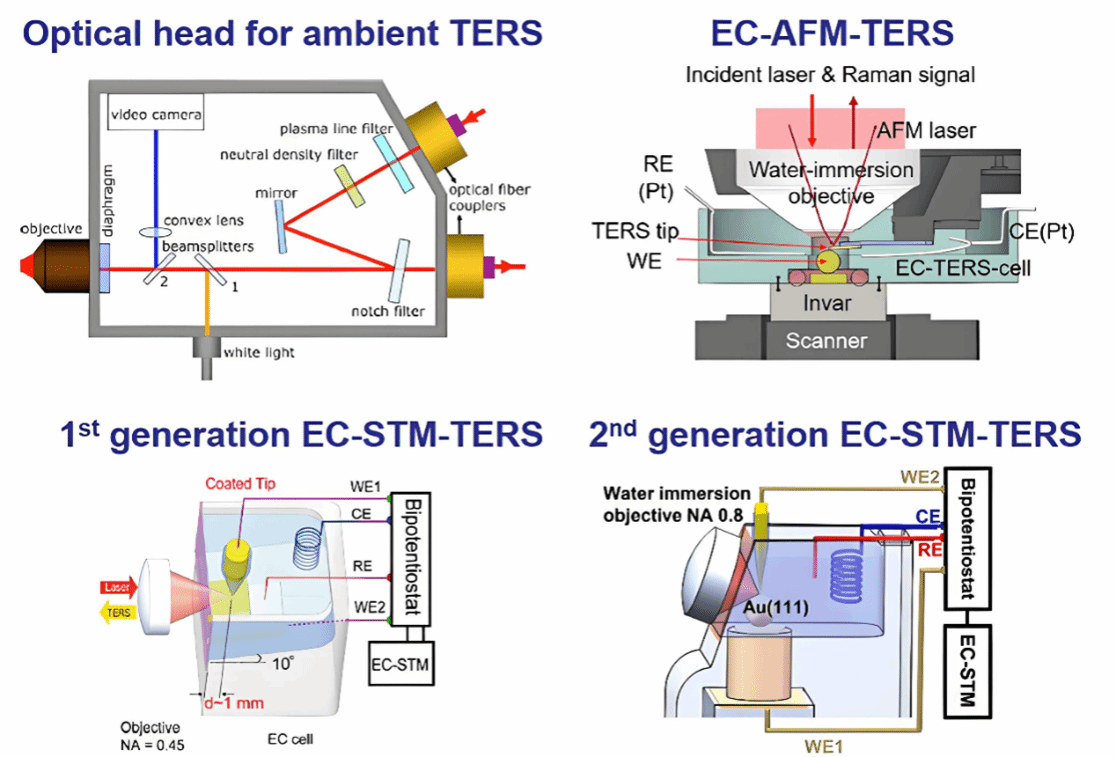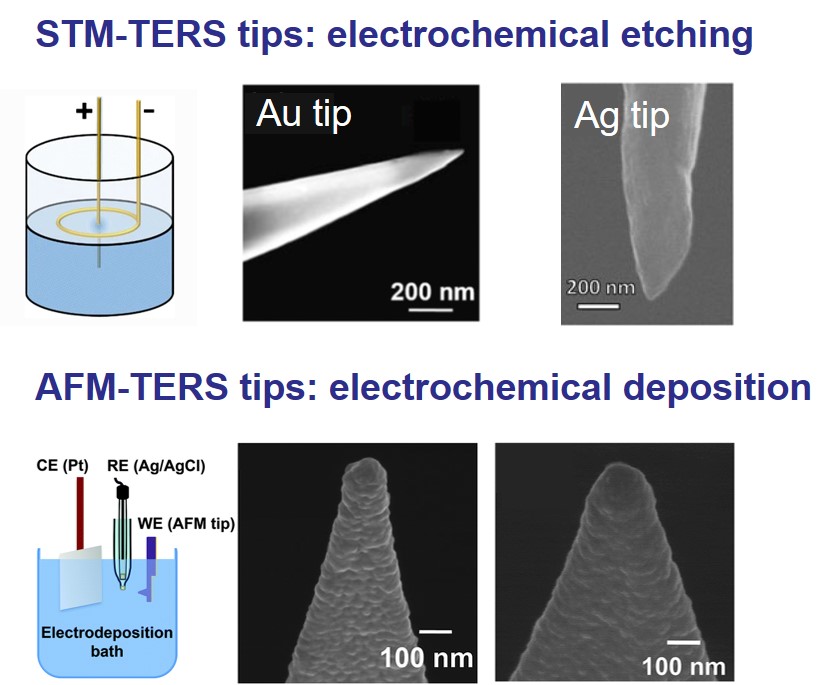Tip-enhanced Raman spectroscopy (TERS) is a powerful nanospectroscopy technique which combines scanning probe microscopy (SPM) with plasmon-enhanced Raman spectroscopy (PERS). It utilized SPM to obtain the topography information while utilized PERS to obtain the chemical information of the sample simultaneously. A sensitivity up to single-molecule level and spatial resolution better than 10 nm can be achieved by TERS. Benefit from this advantage, TERS has been applied in different research fields.
Our group is interested in the characterization of the surface and interface at nanoscale and molecular level to build an accurate structure-activity relationship. In order to achieve this goal, we focused on the development of TERS instruments with both a high sensitivity and a high spatial resolution in both air condition and liquid condition, and fabrication of TERS tips with high enhancement.

The detailed research interests are the following aspects:
1. Development of highly sensitive and easy-to-use TERS instruments working in the air and liquid condition, especially in the electrochemical condition (electrochemical tip-enhanced Raman spectroscopy, EC-TERS).

2. Design and fabrication of highly active gold or silver TERS tips (for STM and AFM) via electrochemical etching, electrochemical deposition, physical vacuum deposition and focused-ion-beam (FIB)-based nanofabrication methods.

3. Nanoscale characterization of the solid-gas interface. Utilizing TERS to probe the electronic properties of different sites of unique catalysts and novel materials (2D material).

4. In-situ characterization of the liquid-gas interface. Applying EC-TERS to in-situ probe the electrochemical reaction, photo-electrochemical reaction on model system and to probe the nano-heterogeneity of the electrochemical interface.

5. Development of other novel TERS-related techniques, including ultralow-frequency tip-enhanced Raman spectroscopy (ULF-TERS), tip-enhanced second-order harmonic technology (TESHG) and so on.
